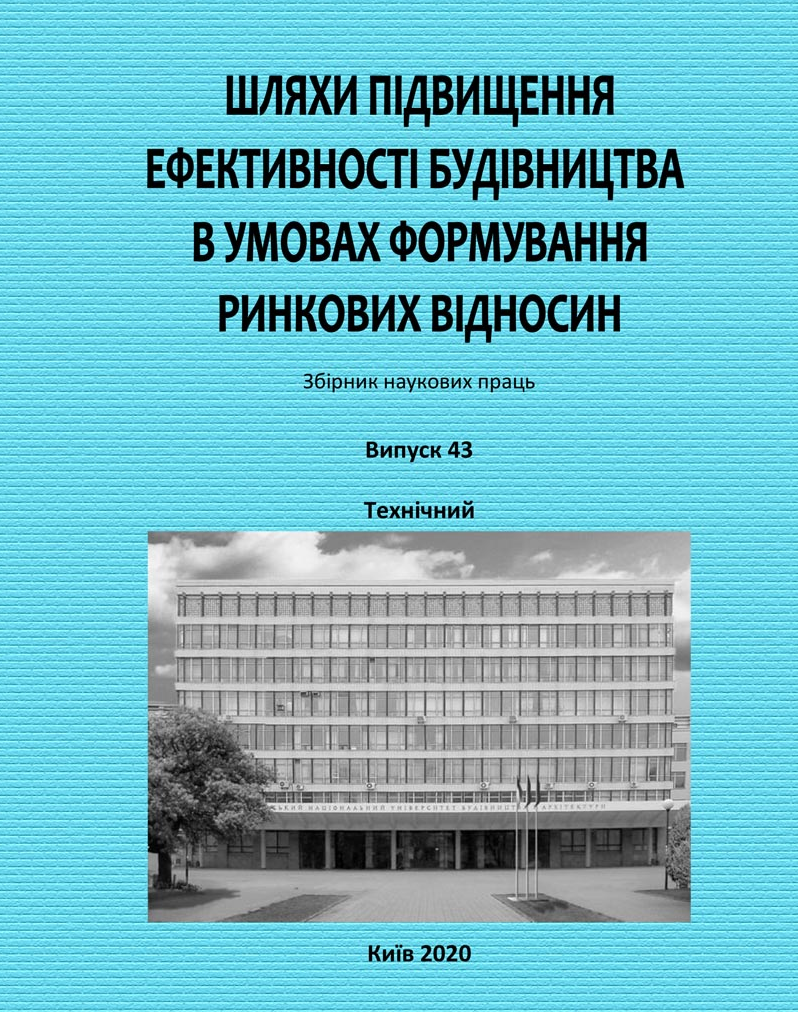Change in heat transfer resistance of a window profile made of different materials
DOI:
https://doi.org/10.32347/2707-501x.2020.43.96-103Keywords:
window profile, different materials, metal-plastic profile elements, wood, groove, heat-saving material, stiffnes, strength, heat transfer resistance coefficient, heat insulation, sound insulation.Abstract
To warm the window system, high-quality thermal insulation of the window profile is required, which is measured by the reduced coefficient of heat transfer resistance.
The article sets the task of developing the design of the window profile from various materials in which the change in heat transfer resistance occurs without equipment readjustment.
The author analyzes the main disadvantages of existing designs of metal-plastic profiles, which have a sufficiently high coefficient of heat transfer resistance, as well as profiles that allow you to change the coefficient of heat transfer resistance of the window profile.
It was found that most window profile designs do not allow changing the coefficient of heat transfer resistance of the profile without changing its thickness. The consumer is not able to choose a profile design of a certain thickness, but with a large heat transfer coefficient. Such an opportunity exists only if you change the profile material. It has been established that window profile constructions that allow changing the heat transfer resistance coefficient without changing the profile thickness are designed only for window systems made of metal-plastic. The use of existing window profile designs in which it is possible to change the heat transfer coefficient of resistance for a window profile made of various materials is possible, but requires a certain readjustment of equipment, which leads to a rise in the cost of the window system and negatively affects the ability of customers to buy this type of product.
The technological possibility of changing the heat transfer resistance coefficient of window profiles made of various materials in various ways without changing the thickness of the profile and without changing equipment is shown.
The proposed design of a window profile made of various materials provides a higher coefficient of heat transfer resistance of the window profile, improves the soundproofing properties of the window system, eliminates the need for certain equipment readjustment, maintains the simplicity of window profile production, and almost does not increase the cost of the window system. The social value of the proposed design is that it retains aesthetic qualitiesReferences
Mikushyn V.I. (RU). (2011). Vikonnyi profil. [Window profile]. Russia Patent No 106292 U1. Retrieved from https://www.fips.ru/iiss/search.xhtml.
Nove pokolinnya plastykovykh vikon. [The new generation of plastic windows]. Retrieved from http://xn--80aajzhcnfck0a.xn--p1ai/PublicDocuments/0804836.pdf.
Pleshkov S.Yu. & Pastukhova L.G. (2015). Reshenie problem energosberegeniya v usloviyakh holodnogo klimata [Solution of the issues of energy saving in conditions of cold climate] // Bulletin of ASTU, 2 (60), 46-50 [in Russian].
Bochkarov V.V., Baranov S.M., Kondratyev A.V. (RU). (2017). Ramnyi profil dlia sborki blokov dlia zakrytiia okonnykh ili dvernykh proemov. [Frame profile for assembling blocks for closing window or doorways]. Russia Patent no 170472 U1. Retrieved from https://www.fips.ru/iiss/search.xhtml.
Fisher Kristian, Frais Mark, Knepper Elmar, Klindt Eginhardt, Shaarshmidt Diter. (2011). Vikonna systema [Window system]. Ukranian Patent no 94738 A. Retrieved from https://base.uipv.org/searchINV/search.php?action=search.
Khristov D.A. (RU). (2017). Tekhnologiia izgotovleniia okonnykh i dvernykh profilei, korpusnykh konstruktsii okonnykh i dvernykh stvorok i ram s ispolzovaniem kombinirovannogo polimerno-kompozitnogo materiala [The manufacturing technology of window and door profiles, case structures of window and door sashes and frames using a combined polymer-composite material] Russia Patent no 2620486 С1. Retrieved from https://www.fips.ru/iiss/search.xhtml.
Hiunter Pilmaiier (DE). (1999). Teploizoliatsiinyi stktsiinyi porozhnystyi profil. [Heat-insulated sectional hollow profile]. Russia Patent no 2133812 C1. Retrieved from https://www.fips.ru/iiss/search.xhtml.
Laumann Khainrikh (DE). (2010). Systema plastmasovykh profiliv dlia zbyrannia blokiv dlia zakryttia proriziv budivelnykh konstruktsii, profil ramy i profil stulky tsiiei systemy. [The system of plastic profiles for the assembly of blocks for closing the apertures of building structure mys, the profile of the frame and the profile of the leaf for this system]. Russia Patent no 92076 U1. Retrieved from https://www.fips.ru/iiss/search.xhtml.
Ihnatieva V. (2017). Tvorchyi pidhid do rozshyrennia tehnichnykh I spogyvchykh vlastyvostei vikonnoi systemy [Creative approach to expanding the technical and consumer properties of a window system]. Budivelne vyrobnytstvo - Construction industry. Kyiv, 62/1, 164-165. Retrieved from http://nbuv.gov.ua/UJRN/buvu_2017_62%281%29__10 [in Ukranian].
Ihnatieva V. (2018). Vikonna systema z pidvyshchenymy teplozakhysnymy vlastyvostia [Window system with enhanced heat-shielding properties]. Shlia khy pidvyshchennia efektyvnosti budivnytstva v umovakh formuvannia rynkovykh vidnosyn - Ways to increase the efficiency of construction in the conditions of the formation of market relations: Kyiv, 35, 44-49. Retrieved from http://elartu.tntu.edu.ua/handle/lib/25636 [in Ukranian].
Downloads
How to Cite
Issue
Section
License
Copyright (c) 2020 V. Ihnatieva

This work is licensed under a Creative Commons Attribution 4.0 International License.
Authors who publish with this journal agree to the following terms:
- Authors retain copyright and grant the journal right of first publication with the work simultaneously licensed under a Creative Commons Attribution License that allows others to share the work with an acknowledgement of the work's authorship and initial publication in this journal.
- Authors are able to enter into separate, additional contractual arrangements for the non-exclusive distribution of the journal's published version of the work (e.g., post it to an institutional repository or publish it in a book), with an acknowledgement of its initial publication in this journal.
- Authors are permitted and encouraged to post their work online (e.g., in institutional repositories or on their website) prior to and during the submission process, as it can lead to productive exchanges, as well as earlier and greater citation of published work (See The Effect of Open Access).

